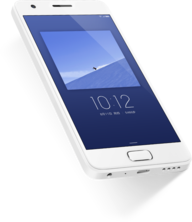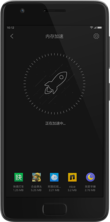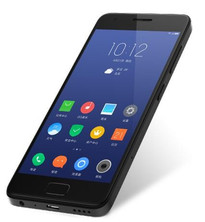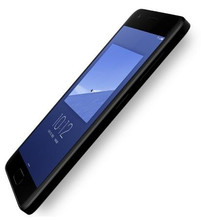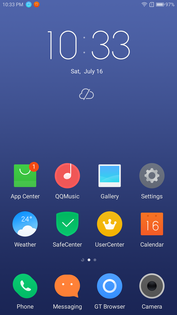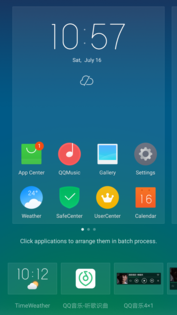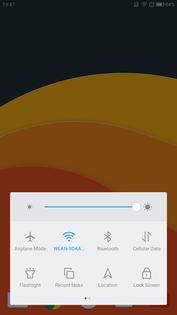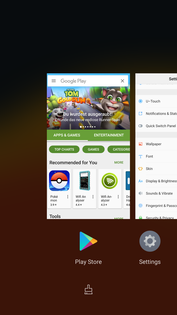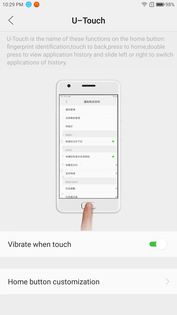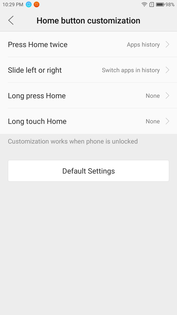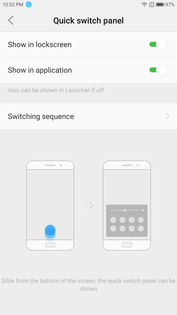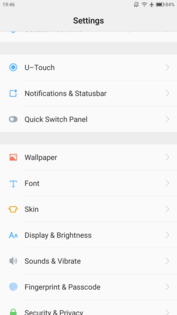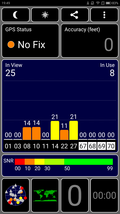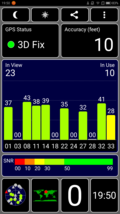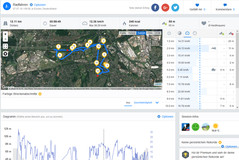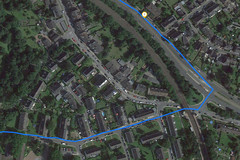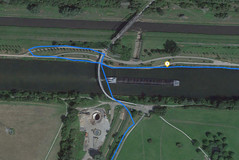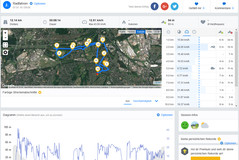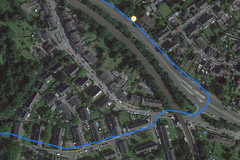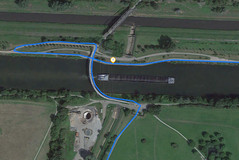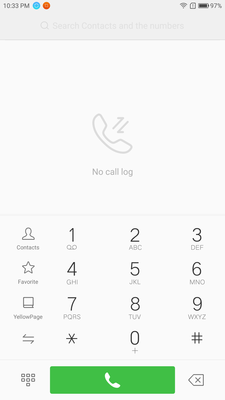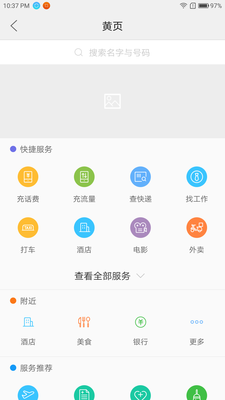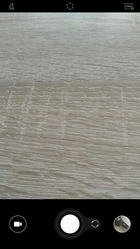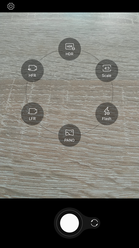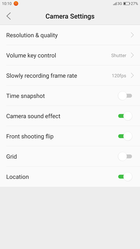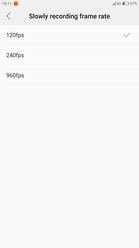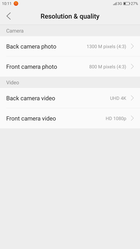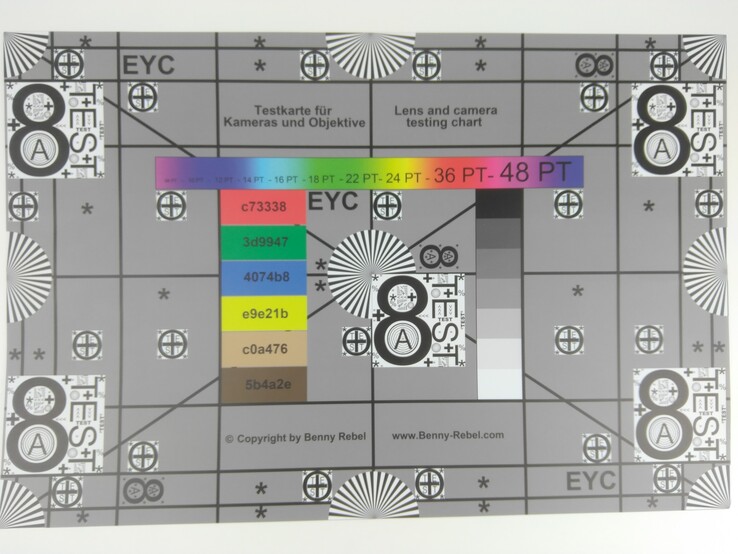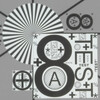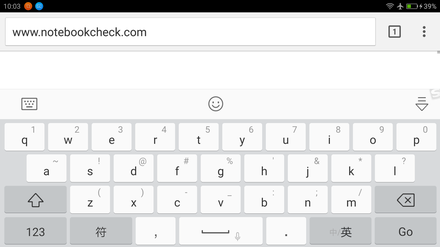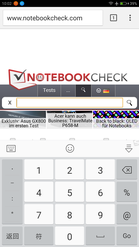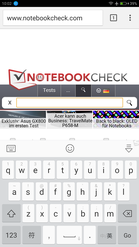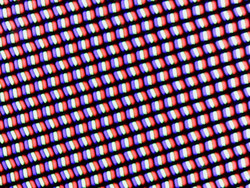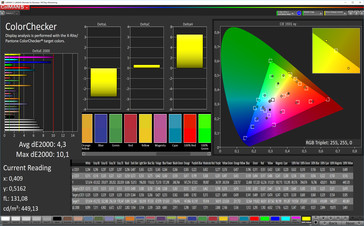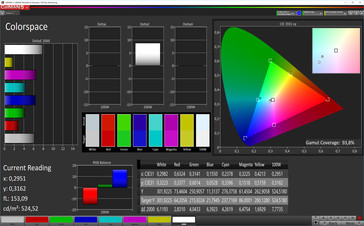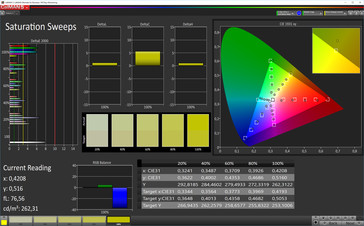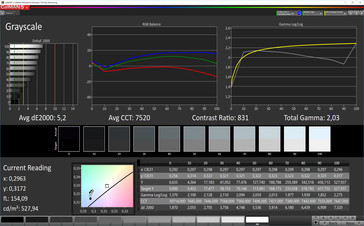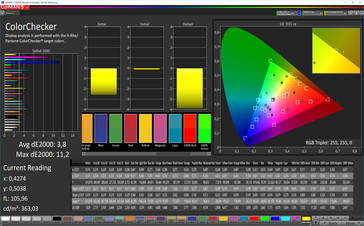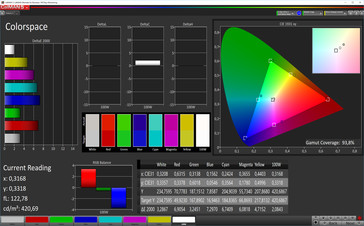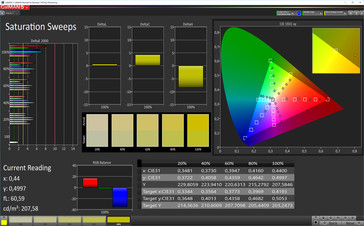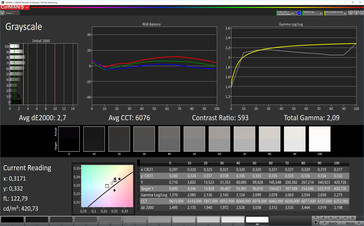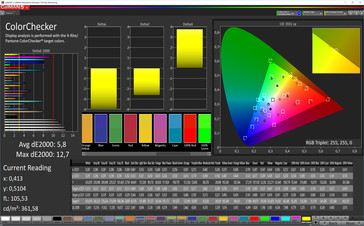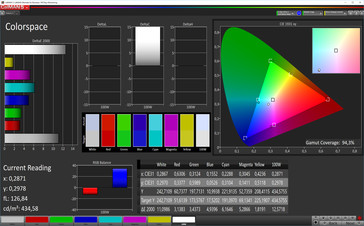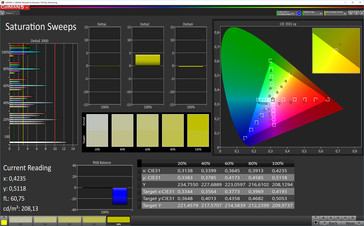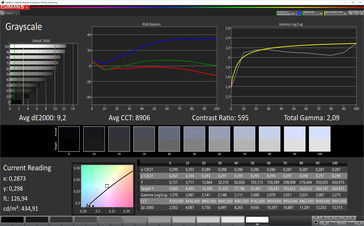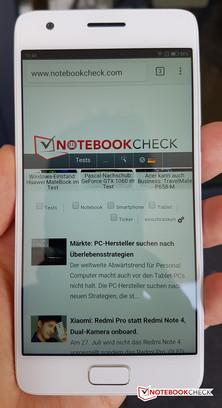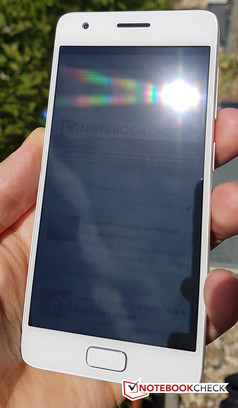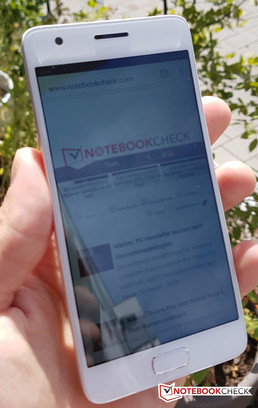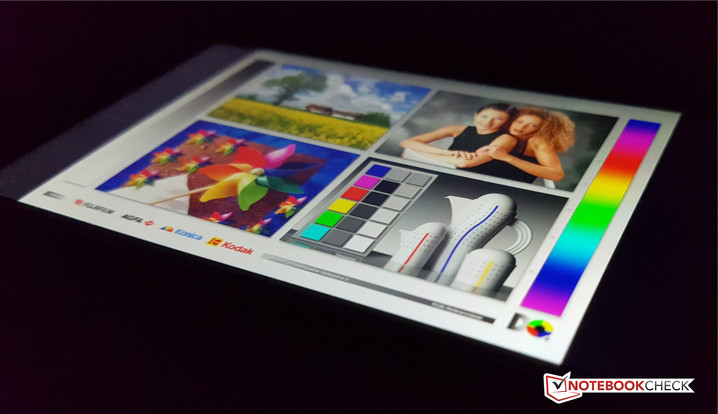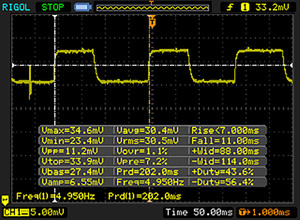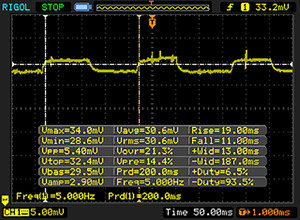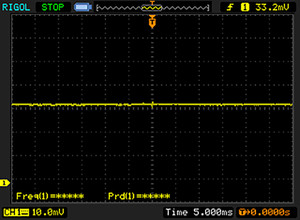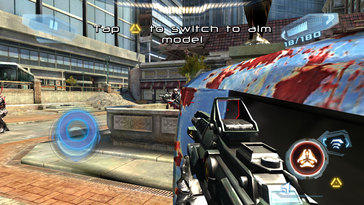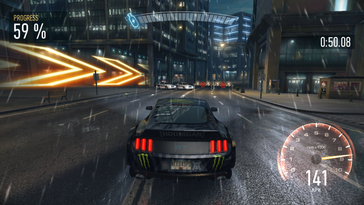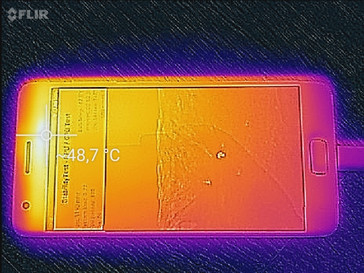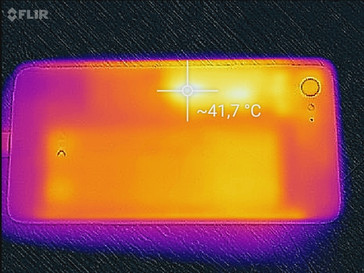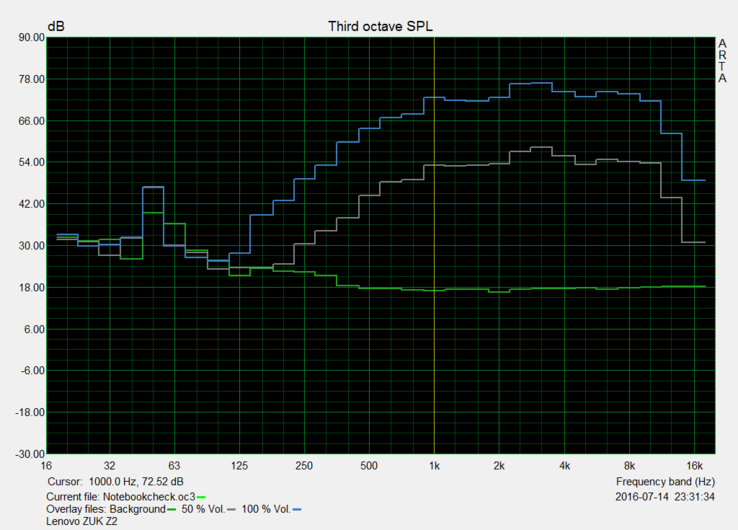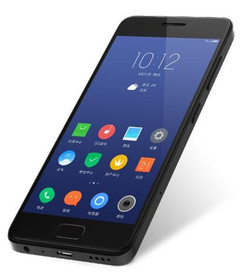Lenovo ZUK Z2 Smartphone Review
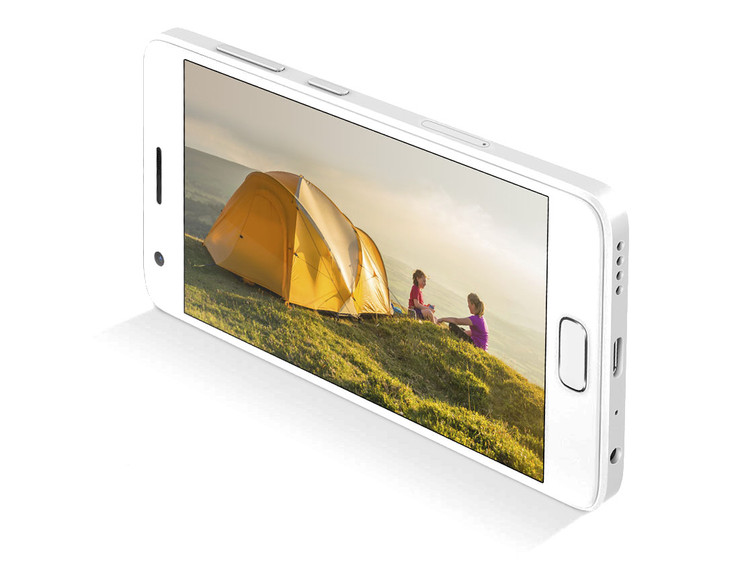
For the original German review, see here.
Due to the increasing competition in the high-end smartphone sector, the Chinese company ZUK has set up a special price-performance bundle. The purchase price is difficult to guess just based on the technical data of ZUK's Z2 - Qualcomm's Snapdragon 820, 3500 mAh battery and a 5-inch FHD IPS panel are some configuration features for a price well below 300 Euros (~$335; importers). 4 GB of RAM and 64 GB of ROM are also a significant amount of memory for a smartphone that is situated in the price range of a mid-range handset.
Compared to the pro model, ZUK's Z2 does not support the LTE band 20 that is important for Germany. Furthermore, it is not possible to upgrade from the eMMC 5.1 to the faster UFS 2.0 storage (128 GB version).
Despite the low purchase price, potential rivals have to be looked for in established brands from the premium range in Germany. We will use the following comparison devices in the test: the Samsung Galaxy S7, the HTC 10, the LG G5, the OnePlus 3, and the Huawei P9. However, the recently tested Xiaomi Mi 5 is also a direct rival of ZUK's Z2 since Xiaomi's smartphone also scores with a very good price-performance total package.
Case
Both the front and back of ZUK's Z2 are made of scratch-resistant glass, which merges into a metal frame in a lightly curved 2.5D bezel. Both glass plates give the smartphone a high-quality appearance, but they also reduce the device's grip considerably. Compared with other smartphones with a glass back, such as Xiaomi's Mi 5 or Samsung's Galaxy S7, the Z2 feels much sleeker. The block-like shape increases the smartphone's restricted flexibility even more. ZUK seals its smartphone with an anti-fingerprint finish to prevent finger marks. Although grease residues were visible on our tested white version, they were not as aggravating and rather less noticeable than on comparable devices.
The dimensions of 141.7 x 68.9 millimeters (~5.6 x 2.7 in) and a screen diagonal of 5 inches result in a screen-surface ratio of almost 71% for ZUK's Z2 - a rate similar to the comparison devices in the test. The handset's stability is very good. However, the build of the keys for volume control and power on the handset's right are not on par with devices from the premium range. We found these buttons too wobbly in our review sample, but their pressure points were well-defined.
Connectivity
With 64 GB of internal eMMC 5.1 memory, ZUK's Z2 offers plenty of storage for personal data, such as photos or music files for a handset in this price range. After deducting the operating system the user has approximately 53.17 GB at their disposal. It is not possible to expand the storage of the dual-SIM smartphone.
ZUK's Z2 features the modern USB Type-C port on the handset's lower edge. However, it only supports the USB 2.0 standard. Furthermore, the Z2 is equipped with a fingerprint scanner and an LED for new notifications.
Software
The Android 6.0 Marshmallow operating system as well as the manufacturer's ZUI user interface in version 2.0 is preloaded. ZUK does not install an app drawer in its smartphone, and the various apps are arranged on the home screen. The Z2's user interface hardly looks like Google's Vanilla UI – rather, we discovered elements from Apple's iOS mobile operating system, such as the appearance of the setting menus, multitasking view or the shortcut at the screen's lower edge.
Since the Z2 was initially intended for the Chinese market, ZUK's smartphone does not support any Google services ex-factory. The only language options are English and Chinese.
Communication & GPS
The Z2 features Bluetooth version 4.1 for wireless communication between mobile devices. The manufacturer does not install an NFC chip. Furthermore, ZUK's smartphone supports the use of 2 nano-SIM cards. However, only one slot supports LTE Cat. 6 - this high-speed mobile network standard achieves up to 300 MBit/s in downstream and 50 MBit/s in upstream. The second SIM card is limited to 3G connections.
The Wi-Fi module supports the IEEE 802.11 a/b/g/n and ac standards. The reception performance is very good and the Wi-Fi signal is stable in routine use. The attenuation of just under -30 dBm is low next to the router (Telekom Speedport, W921V). The average data transmission rates at one meter (~3 ft) away from our reference router (Linksys EA8500) are very good with 311 Mbit/s (transmit) and satisfactory with 154 Mbit/s (receive).
| Networking | |
| iperf Server (receive) TCP 1 m | |
| Xiaomi Mi 5 | |
| Lenovo ZUK Z2 | |
| LG G5 | |
| OnePlus 3 | |
| Huawei P9 | |
| iperf Client (transmit) TCP 1 m | |
| Xiaomi Mi 5 | |
| OnePlus 3 | |
| Huawei P9 | |
| Lenovo ZUK Z2 | |
| LG G5 | |
The navigation systems GPS, BeiDou, and GLONASS are supported for localization, and functioned very fast with an accuracy of 3 meters (~10 ft) in the outdoors. The signal quality was too weak indoors and thus no satellites were found. We ride our test route by bike and compare the total distance of the GPS module in ZUK's smartphone with that of Garmin's Edge 500 GPS bike computer. Although there are slight deviations in the route, the measured difference of 30 meters (~98 ft) between the two devices is very small.
Telephone & Call Quality
The voice quality of the Z2 is good in both directions - both the contact as well as the caller `could hear each other distinctly. The quality of the installed microphone was praised, particularly in video calls. Distracting side noises were not produced. We performed the test calls via Skype and the German Vodafone mobile network (D network).
The phone app's layout is simple and straightforward, and offers all the standard functions. However, sometimes Chinese layout was displayed even though the system language was set to English (e.g. number suggestions or Yellow Pages menu).
Cameras
The rear-facing 13 MP camera offers a wide aperture of f/2.2 and a phase detection autofocus that the manufacturer specifies with a focus time of 0.1 seconds. The image sensor (1/2.6") comes from Samsung (ISOCELL technology), and each pixel has an edge length of 1.34 millimeters (~0.05 in). Furthermore, a dual-LED flash and optical image stabilizer (OIS) are also installed.
The photo quality of ZUK's Z2 is very good considering the price. The dynamic range is sufficiently high so that bright and high-contrast photos with good image sharpness are produced (scene 1: surroundings). A visible image noise is created in low-light conditions, and the blurriness in the photos increases (scene 3: night). Overall, the Z2's photo quality is good, but it cannot compete with Samsung's Galaxy S7 in terms of sharpness, image details, and brightness.
The front-facing camera has a resolution of 8 MP and an aperture of f/2.0. The photo quality for selfies is satisfactory. Colors are reproduced well, but the resulting photos often do not look sharp enough.
ZUK's smartphone records Ultra HD resolution videos (3840x2160 pixels, 30 FPS) maximum. Slow motion videos at up to 960 FPS in 720p can also be recorded. The video resolution drops to 1080p at 30 FPS when using the 8 MP front-facing camera.
Accessories & Warranty
ZUK's Z2 comes with a modular power supply, USB cable, and a manual in Chinese.
The manufacturer's warranty is 12 months.
Input Devices & Handling
The Z2 is not operated via the commonly used Android onscreen buttons for "Back", "Multitasking", and "Home" or their capacitive counterpart below the screen. ZUK's smartphone can only be controlled via the physical-capacitive home button. In addition to fingerprints for unlocking the handset, the main control detects predefined gestures. For example, the home button is only tapped for a fraction of a second for "Back" and somewhat longer for "Multitasking". Applications can be changed via swiping left to right over the capacitive home button. Applications are scaled down and the home screen opens when the physical button is pressed down. Although this operating concept is rather strange at first, it is not less effective than the traditional navigation in Android after some getting used to.
The virtual keyboard "Sogou" and Googles standard model (QWERTY layout) are available as onscreen input devices. Naturally, alternative keyboards (e.g. QWERTZ layout) can be downloaded from the Play Store.
Display
The 5.2-inch screen has a Full High Definition resolution of 1920x1080 pixels and a pixel density of 424 PPI. Individual pixels are not visible even when looking closer.
The maximum brightness of ZUK's Z2 on a pure white screen background is a very good 538 cd/m². We also examine the brightness when white and dark areas are distributed evenly (APL50) in the test. We determined a brightness of 526 cd/m² here. We measured a luminosity of 512 cd/m² with enabled, adaptive ambient light sensor for controlling screen brightness.
| |||||||||||||||||||||||||
Brightness Distribution: 84 %
Center on Battery: 512 cd/m²
Contrast: 883:1 (Black: 0.58 cd/m²)
ΔE ColorChecker Calman: 3.8 | ∀{0.5-29.43 Ø4.78}
ΔE Greyscale Calman: 2.7 | ∀{0.09-98 Ø5}
Gamma: 2.09
CCT: 6076 K
| Lenovo ZUK Z2 IPS, 1920x1080, 5" | Xiaomi Mi 5 IPS, 1920x1080, 5.2" | Samsung Galaxy S7 SAMOLED, 2560x1440, 5.1" | LG G5 IPS Quantum, 2560x1440, 5.3" | HTC 10 Super LCD 5, 2560x1440, 5.2" | Huawei P9 IPS-NEO, JDI, 1920x1080, 5.2" | OnePlus 3 Optic-AMOLED, 1920x1080, 5.5" | |
|---|---|---|---|---|---|---|---|
| Screen | 13% | 19% | -3% | 12% | 10% | -12% | |
| Brightness middle (cd/m²) | 512 | 598 17% | 350 -32% | 784 53% | 445 -13% | 582 14% | 419 -18% |
| Brightness (cd/m²) | 502 | 566 13% | 351 -30% | 774 54% | 434 -14% | 563 12% | 431 -14% |
| Brightness Distribution (%) | 84 | 90 7% | 98 17% | 91 8% | 93 11% | 91 8% | 84 0% |
| Black Level * (cd/m²) | 0.58 | 0.51 12% | 0.43 26% | 0.36 38% | 0.38 34% | ||
| Contrast (:1) | 883 | 1173 33% | 1823 106% | 1236 40% | 1532 73% | ||
| Colorchecker dE 2000 * | 3.8 | 3.5 8% | 2.04 46% | 6.5 -71% | 2.8 26% | 4.4 -16% | 4.1 -8% |
| Colorchecker dE 2000 max. * | 11.2 | 6.1 46% | 3.25 71% | 11.7 -4% | 5.8 48% | 7.4 34% | 12 -7% |
| Greyscale dE 2000 * | 2.7 | 3.5 -30% | 1.63 40% | 8 -196% | 3.7 -37% | 4.8 -78% | 3.3 -22% |
| Gamma | 2.09 105% | 2.29 96% | 2.07 106% | 2.22 99% | 2.31 95% | 2.2 100% | 2.1 105% |
| CCT | 6076 107% | 6532 100% | 6391 102% | 8699 75% | 7164 91% | 6175 105% | 6550 99% |
| Color Space (Percent of AdobeRGB 1998) (%) | 86.86 | 68.08 | 77.78 | 89.38 | |||
| Color Space (Percent of sRGB) (%) | 99.35 | 97.46 | 99.44 | 100 |
* ... smaller is better
The black level of 0.58 cd/m² (APL50 rate: 0.58 cd/m²) is clearly higher than the rates of some rivals with an IPS panel, and results in an only mediocre contrast ratio of 883:1. Subjectively and objectively, the screen's color reproduction convinces us (display mode: warm). We assess the IPS panel with a spectrophotometer and the professional CalMAN software. Compared with the sRGB color space, the average DeltaE deviation in colors (3.8) is close to the ideal (<3). The rates for both grayscale deviations and gamma are even below the target rate of 3.0 and 2.2.
Thanks to the very bright liquid crystal display, reading the screen is even possible on sunny days in the outdoors. As typical for IPS panels, the viewing angle stability is good although a minor brightness loss in flat viewing angles is visible.
Display Response Times
| ↔ Response Time Black to White | ||
|---|---|---|
| 18 ms ... rise ↗ and fall ↘ combined | ↗ 7 ms rise | |
| ↘ 11 ms fall | ||
| The screen shows good response rates in our tests, but may be too slow for competitive gamers. In comparison, all tested devices range from 0.1 (minimum) to 240 (maximum) ms. » 39 % of all devices are better. This means that the measured response time is better than the average of all tested devices (20.2 ms). | ||
| ↔ Response Time 50% Grey to 80% Grey | ||
| 30 ms ... rise ↗ and fall ↘ combined | ↗ 19 ms rise | |
| ↘ 11 ms fall | ||
| The screen shows slow response rates in our tests and will be unsatisfactory for gamers. In comparison, all tested devices range from 0.165 (minimum) to 636 (maximum) ms. » 39 % of all devices are better. This means that the measured response time is similar to the average of all tested devices (31.7 ms). | ||
Screen Flickering / PWM (Pulse-Width Modulation)
| Screen flickering / PWM not detected | |||
In comparison: 53 % of all tested devices do not use PWM to dim the display. If PWM was detected, an average of 8142 (minimum: 5 - maximum: 343500) Hz was measured. | |||
Performance
The SoC in ZUK's Z2 is Snapdragon 820 MSM8996 from the USA-based chip manufacturer Qualcomm. The SoC designed for 2016 carries 4 CPU cores from the proprietary Kryo architecture. Two cores clock at a maximum of 1.6 GHz and the other two at a maximum of 2.15 GHz. Qualcomm's SoC alongside 4 GB of RAM displays its potential in the benchmarks and meets the Android opponents eye to eye. ZUK's Z2, Xiaomi Mi 5, and OnePlus 3 are the performance leaders in graphic-driven benchmark tests. The results of the browser test are also very good in total, although slightly lower than current flagship devices - apart from LG G5.
ZUK implements an "Overclock Mode" for somewhat higher performance in its smartphone. Enabling this mode leads to short performance boosts via overclocking the processor from its maximum of 2.15 GHz to 2.30 GHz. This only has a marginal if any impact in the benchmarks during the browser tests. The biggest boost was recorded in Google's Octane V2 (+8%).
The performance of the internal eMMC storage is not on the good level of other high-end devices - the manufacturer has made some cutbacks here and does not rely on a modern UFS 2.0 storage. Compared with mid-range devices that have a similar purchase price as the Z2, the access times of ZUK's smartphone is quite satisfactory (see for example ZTE Blade V7).
| AndroBench 3-5 | |
| Random Write 4KB (sort by value) | |
| Lenovo ZUK Z2 | |
| Xiaomi Mi 5 | |
| Samsung Galaxy S7 | |
| LG G5 | |
| HTC 10 | |
| Huawei P9 | |
| OnePlus 3 | |
| Random Read 4KB (sort by value) | |
| Lenovo ZUK Z2 | |
| Xiaomi Mi 5 | |
| Samsung Galaxy S7 | |
| LG G5 | |
| HTC 10 | |
| Huawei P9 | |
| OnePlus 3 | |
| Sequential Write 256KB (sort by value) | |
| Lenovo ZUK Z2 | |
| Xiaomi Mi 5 | |
| Samsung Galaxy S7 | |
| LG G5 | |
| HTC 10 | |
| Huawei P9 | |
| OnePlus 3 | |
| Sequential Read 256KB (sort by value) | |
| Lenovo ZUK Z2 | |
| Xiaomi Mi 5 | |
| Samsung Galaxy S7 | |
| LG G5 | |
| HTC 10 | |
| Huawei P9 | |
| OnePlus 3 | |
| AnTuTu v6 - Total Score (sort by value) | |
| Lenovo ZUK Z2 | |
| Xiaomi Mi 5 | |
| Samsung Galaxy S7 | |
| LG G5 | |
| HTC 10 | |
| Huawei P9 | |
| OnePlus 3 | |
| Geekbench 3 | |
| 64 Bit Single-Core Score (sort by value) | |
| Lenovo ZUK Z2 | |
| Xiaomi Mi 5 | |
| Samsung Galaxy S7 | |
| LG G5 | |
| HTC 10 | |
| Huawei P9 | |
| OnePlus 3 | |
| 64 Bit Multi-Core Score (sort by value) | |
| Lenovo ZUK Z2 | |
| Xiaomi Mi 5 | |
| Samsung Galaxy S7 | |
| LG G5 | |
| HTC 10 | |
| Huawei P9 | |
| OnePlus 3 | |
| 3DMark | |
| 1280x720 offscreen Ice Storm Unlimited Score (sort by value) | |
| Lenovo ZUK Z2 | |
| Xiaomi Mi 5 | |
| Samsung Galaxy S7 | |
| LG G5 | |
| HTC 10 | |
| Huawei P9 | |
| OnePlus 3 | |
| 1280x720 offscreen Ice Storm Unlimited Graphics Score (sort by value) | |
| Lenovo ZUK Z2 | |
| Xiaomi Mi 5 | |
| Samsung Galaxy S7 | |
| LG G5 | |
| HTC 10 | |
| Huawei P9 | |
| OnePlus 3 | |
| 1280x720 offscreen Ice Storm Unlimited Physics (sort by value) | |
| Lenovo ZUK Z2 | |
| Xiaomi Mi 5 | |
| Samsung Galaxy S7 | |
| LG G5 | |
| HTC 10 | |
| Huawei P9 | |
| OnePlus 3 | |
| 2560x1440 Sling Shot OpenGL ES 3.0 (sort by value) | |
| Lenovo ZUK Z2 | |
| Xiaomi Mi 5 | |
| Samsung Galaxy S7 | |
| LG G5 | |
| HTC 10 | |
| Huawei P9 | |
| OnePlus 3 | |
| 2560x1440 Sling Shot OpenGL ES 3.0 Graphics (sort by value) | |
| Lenovo ZUK Z2 | |
| Xiaomi Mi 5 | |
| Samsung Galaxy S7 | |
| LG G5 | |
| HTC 10 | |
| Huawei P9 | |
| OnePlus 3 | |
| 2560x1440 Sling Shot OpenGL ES 3.0 Physics (sort by value) | |
| Lenovo ZUK Z2 | |
| Xiaomi Mi 5 | |
| Samsung Galaxy S7 | |
| LG G5 | |
| HTC 10 | |
| Huawei P9 | |
| OnePlus 3 | |
| GFXBench (DX / GLBenchmark) 2.7 | |
| T-Rex Onscreen (sort by value) | |
| Lenovo ZUK Z2 | |
| Xiaomi Mi 5 | |
| Samsung Galaxy S7 | |
| LG G5 | |
| HTC 10 | |
| Huawei P9 | |
| OnePlus 3 | |
| 1920x1080 T-Rex Offscreen (sort by value) | |
| Lenovo ZUK Z2 | |
| Xiaomi Mi 5 | |
| Samsung Galaxy S7 | |
| LG G5 | |
| HTC 10 | |
| Huawei P9 | |
| OnePlus 3 | |
| GFXBench 3.0 | |
| on screen Manhattan Onscreen OGL (sort by value) | |
| Lenovo ZUK Z2 | |
| Xiaomi Mi 5 | |
| Samsung Galaxy S7 | |
| LG G5 | |
| HTC 10 | |
| Huawei P9 | |
| OnePlus 3 | |
| 1920x1080 1080p Manhattan Offscreen (sort by value) | |
| Lenovo ZUK Z2 | |
| Xiaomi Mi 5 | |
| Samsung Galaxy S7 | |
| LG G5 | |
| HTC 10 | |
| Huawei P9 | |
| OnePlus 3 | |
| GFXBench 3.1 | |
| on screen Manhattan ES 3.1 Onscreen (sort by value) | |
| Lenovo ZUK Z2 | |
| Xiaomi Mi 5 | |
| Samsung Galaxy S7 | |
| LG G5 | |
| HTC 10 | |
| Huawei P9 | |
| OnePlus 3 | |
| 1920x1080 Manhattan ES 3.1 Offscreen (sort by value) | |
| Lenovo ZUK Z2 | |
| Xiaomi Mi 5 | |
| Samsung Galaxy S7 | |
| LG G5 | |
| HTC 10 | |
| Huawei P9 | |
| OnePlus 3 | |
| PCMark for Android - Work performance score (sort by value) | |
| Lenovo ZUK Z2 | |
| Xiaomi Mi 5 | |
| Samsung Galaxy S7 | |
| LG G5 | |
| HTC 10 | |
| Huawei P9 | |
| OnePlus 3 | |
| Octane V2 - Total Score (sort by value) | |
| Lenovo ZUK Z2 | |
| Xiaomi Mi 5 | |
| Samsung Galaxy S7 | |
| LG G5 | |
| HTC 10 | |
| Huawei P9 | |
| OnePlus 3 | |
| JetStream 1.1 - Total Score (sort by value) | |
| Lenovo ZUK Z2 | |
| Xiaomi Mi 5 | |
| Samsung Galaxy S7 | |
| LG G5 | |
| HTC 10 | |
| Huawei P9 | |
| OnePlus 3 | |
| Mozilla Kraken 1.1 - Total (sort by value) | |
| Lenovo ZUK Z2 | |
| Xiaomi Mi 5 | |
| Samsung Galaxy S7 | |
| LG G5 | |
| HTC 10 | |
| Huawei P9 | |
| OnePlus 3 | |
* ... smaller is better
Games
Thanks to the powerful Adreno 530 graphics unit by Qualcomm, ZUK's Z2 is quite suitable for games. Even demanding games such as "N.O.V.A 3" or "Need for Speed No Limits" can be played smoothly using high settings. The well-functioning sensors further contribute to a good gaming experience.
Emissions
Temperature
The surface temperatures made a good impression in the test. ZUK's smartphone only heats up marginally in idle mode and during low load. We even measured just 39.8 °C (~104 °F; rear) during maximum load as the hottest spot. Although the surface temperatures are noticeable in routine use, they are not unpleasant.
(±) The maximum temperature on the upper side is 41.9 °C / 107 F, compared to the average of 35.2 °C / 95 F, ranging from 21.9 to 247 °C for the class Smartphone.
(+) The bottom heats up to a maximum of 39.8 °C / 104 F, compared to the average of 34 °C / 93 F
(±) In idle usage, the average temperature for the upper side is 32.3 °C / 90 F, compared to the device average of 32.9 °C / 91 F.
Speaker
The Z2's mono speaker is situated behind milled drill holes on the casing’s lower edge. The sound quality is good, and the maximum volume of 85 dB(A) is typical for smartphones. The sound impression hardly shows any noteworthy distortions; as expected, basses are absent.
Playing music via the 3.5 mm jack is on a good level.
Frequency diagram in comparison (check boxes above can be turned on/off!)
Rate 1: Pink Noise 100% volume; Rate 2: Audio off
Energy Management
The power consumption of ZUK's Z2 is satisfactory for a high-performance smartphone based on a high-end SoC and 4 GB of RAM. However, the manufacturer could optimize the idle power consumption in particular - a comparison with OnePlus' 3 shows the possibilities despite a much larger screen.
| Off / Standby | |
| Idle | |
| Load |
|
Key:
min: | |
| Lenovo ZUK Z2 3500 mAh | Xiaomi Mi 5 3000 mAh | Samsung Galaxy S7 3000 mAh | LG G5 2800 mAh | HTC 10 3000 mAh | Huawei P9 3000 mAh | OnePlus 3 3000 mAh | |
|---|---|---|---|---|---|---|---|
| Power Consumption | 8% | 30% | 7% | 1% | 15% | 13% | |
| Idle Minimum * (Watt) | 1.31 | 0.45 66% | 0.68 48% | 0.55 58% | 0.68 48% | 0.77 41% | 0.57 56% |
| Idle Average * (Watt) | 2.03 | 1.68 17% | 1.02 50% | 1.37 33% | 1.49 27% | 2.36 -16% | 1.24 39% |
| Idle Maximum * (Watt) | 2.08 | 1.71 18% | 1.14 45% | 2.25 -8% | 1.91 8% | 2.37 -14% | 1.36 35% |
| Load Average * (Watt) | 5.45 | 6.7 -23% | 4.73 13% | 6.24 -14% | 7.4 -36% | 3.09 43% | 5.92 -9% |
| Load Maximum * (Watt) | 6.75 | 9.18 -36% | 7.16 -6% | 9.12 -35% | 9.71 -44% | 5.35 21% | 10.53 -56% |
* ... smaller is better
Battery Runtime
The Z2 is equipped with a large 3500 mAh lithium ion battery. ZUK's smartphone places itself in the upper third among the rivalling devices with 9 hours and 6 minutes in our practical Wi-Fi test using a brightness of 150 cd/m². Considering the battery capacity and screen size, the runtimes are good but could still be improved.
ZUK's Z2 is fully recharged in approximately 1 hour and 45 minutes with the included 13.25-watt power supply (5.3 V; 2.5 A) and Qualcomm's Quick Charge 3.0.
| Lenovo ZUK Z2 3500 mAh | Xiaomi Mi 5 3000 mAh | Samsung Galaxy S7 3000 mAh | LG G5 2800 mAh | HTC 10 3000 mAh | Huawei P9 3000 mAh | OnePlus 3 3000 mAh | |
|---|---|---|---|---|---|---|---|
| Battery runtime | |||||||
| WiFi v1.3 (h) | 9.1 | 8.4 -8% | 7.6 -16% | 6.5 -29% | 6.9 -24% | 9.5 4% | 14 54% |
Pros
Cons
Verdict
The Chinese manufacturer ZUK does a good job in many respects with its Z2 model. Firstly, the high-quality casing made of metal and glass and the generously sized memory (4 GB of RAM, 64 GB of ROM) in addition to the high-performance Snapdragon 820 SoC - and all that at a street price of roughly 270 Euros (~$302; importers). Furthermore, the Z2 features one of the most innovative home button implementations in the Android market. Whether this is an advantage or disadvantage is a matter of personal taste - we liked the handling concept.
Does ZUK's Z2 connect to the premium smartphones with this? Not in our opinion considering that too many cutbacks have been made in order to achieve the price. Starting with the internal storage - ZUK only relies on the "slower" eMMC 5.1 memory instead of the faster UFS 2.0 storage. The primary camera strikes with high light yield and good image quality, but it does not achieve the standard of current premium smartphones. Furthermore, the configuration list has been slimmed down somewhat (no LTE band 20 support, no NFC) and the manufacturing quality (dedicated buttons) could be improved in some places.
ZUK's Z2 is a very good smartphone in a very good price-performance bundle. If the price is not the most important thing and the restrictions involved with an import device can be accepted, we would recommend looking closer at Xiaomi's Mi 5 - although it is slightly more expensive (32 GB model), it offers a better total package in our opinion.
Lenovo ZUK Z2
- 07/27/2016 v5.1 (old)
Marcus Herbrich




